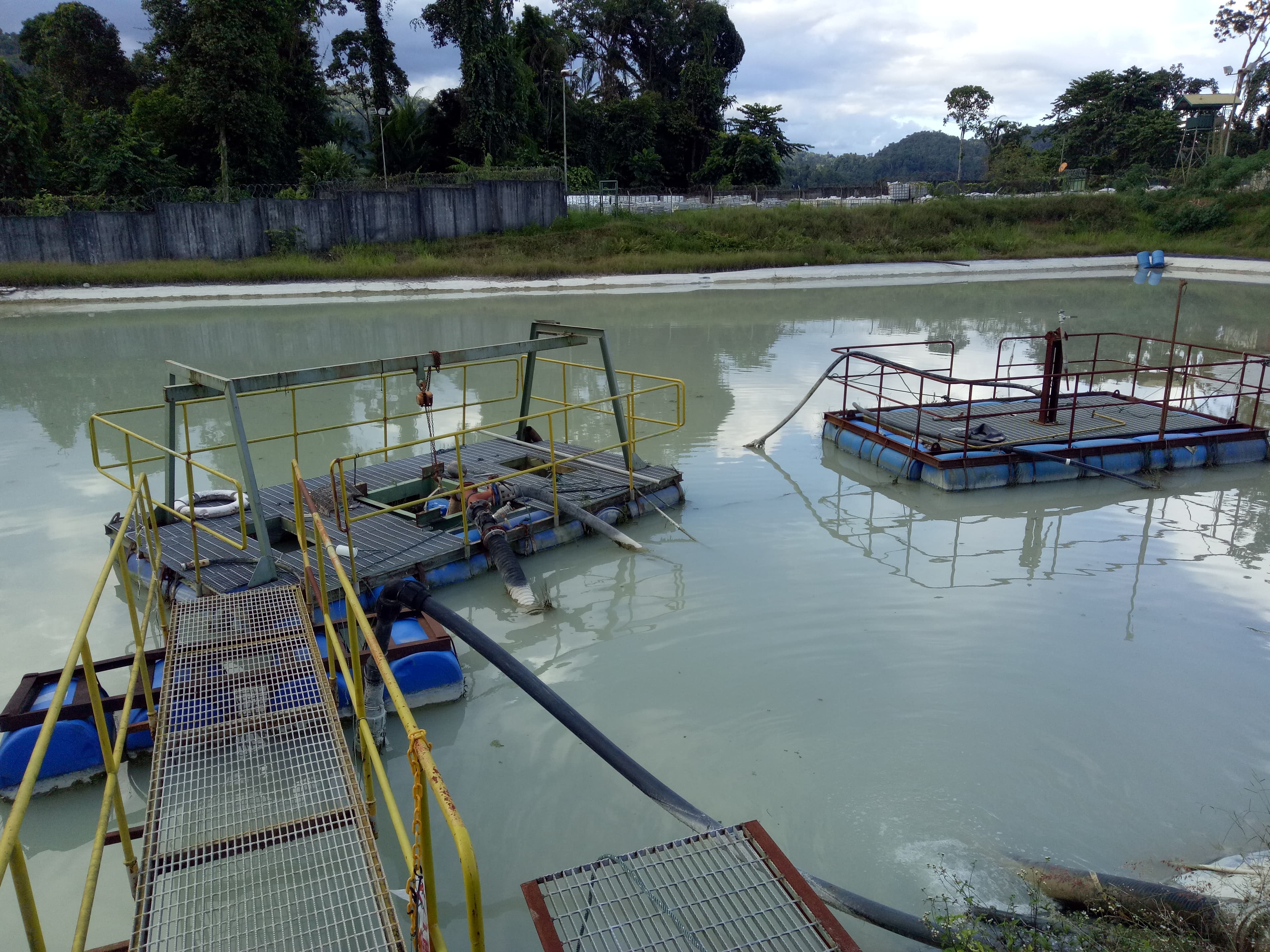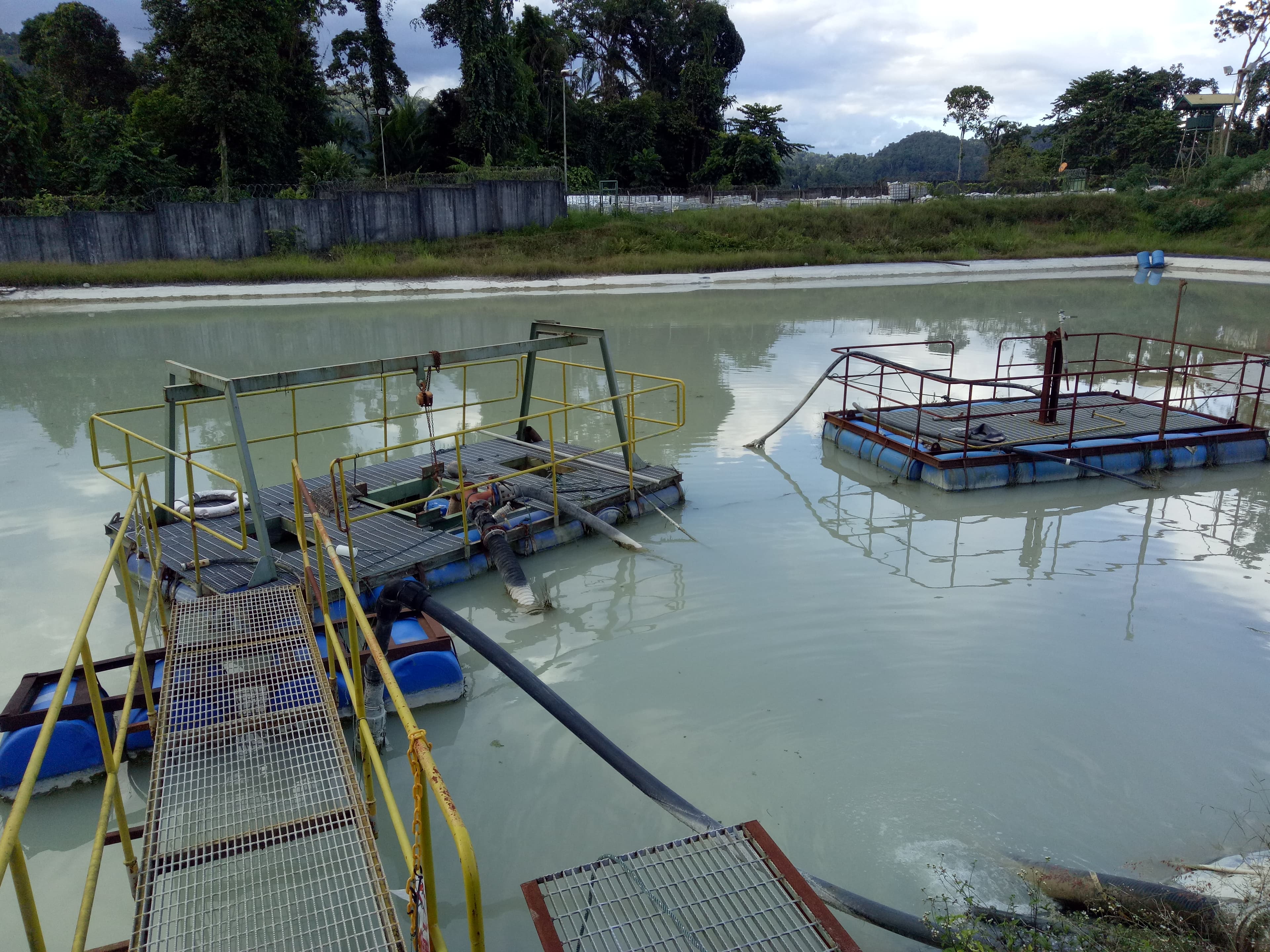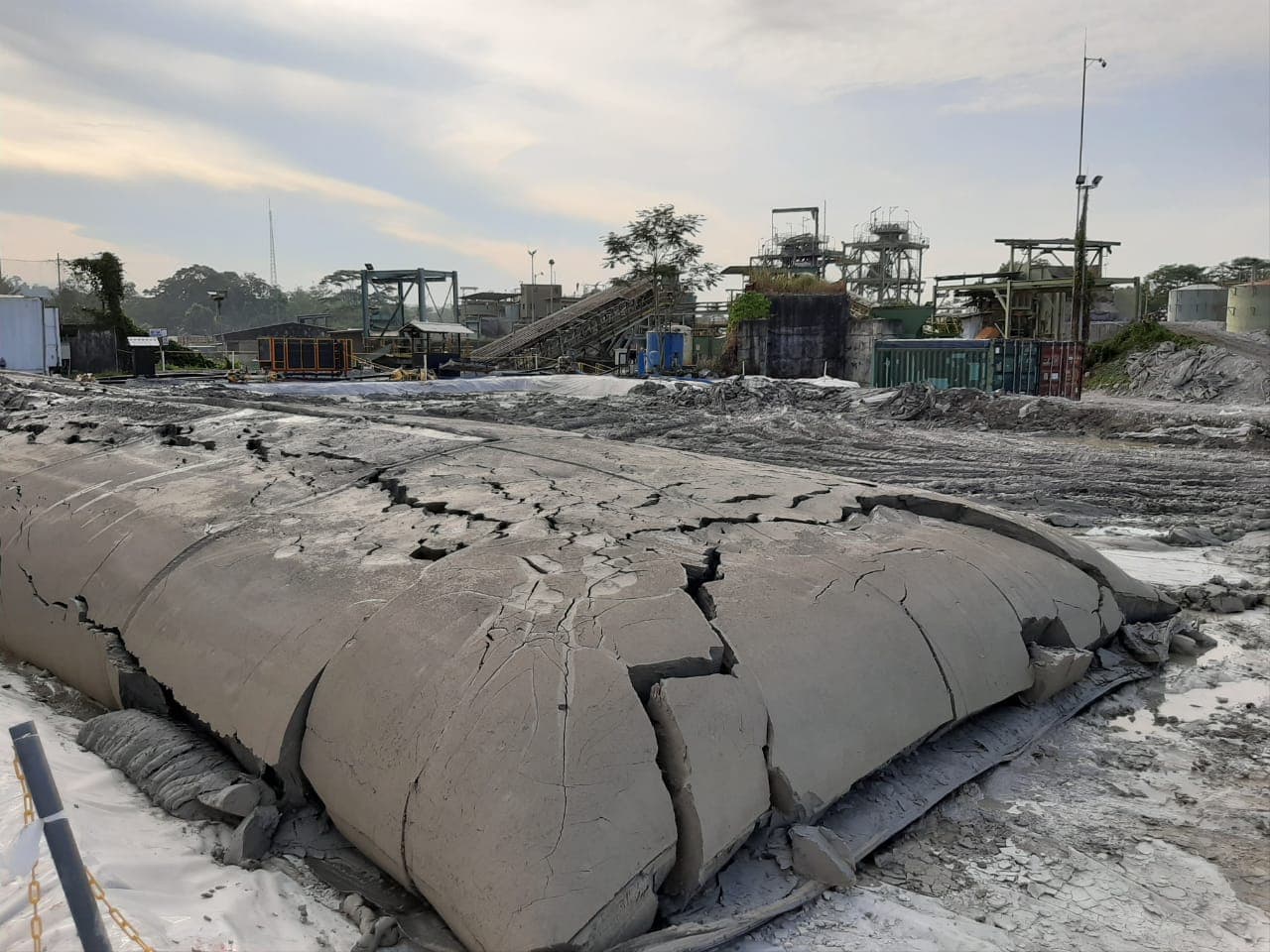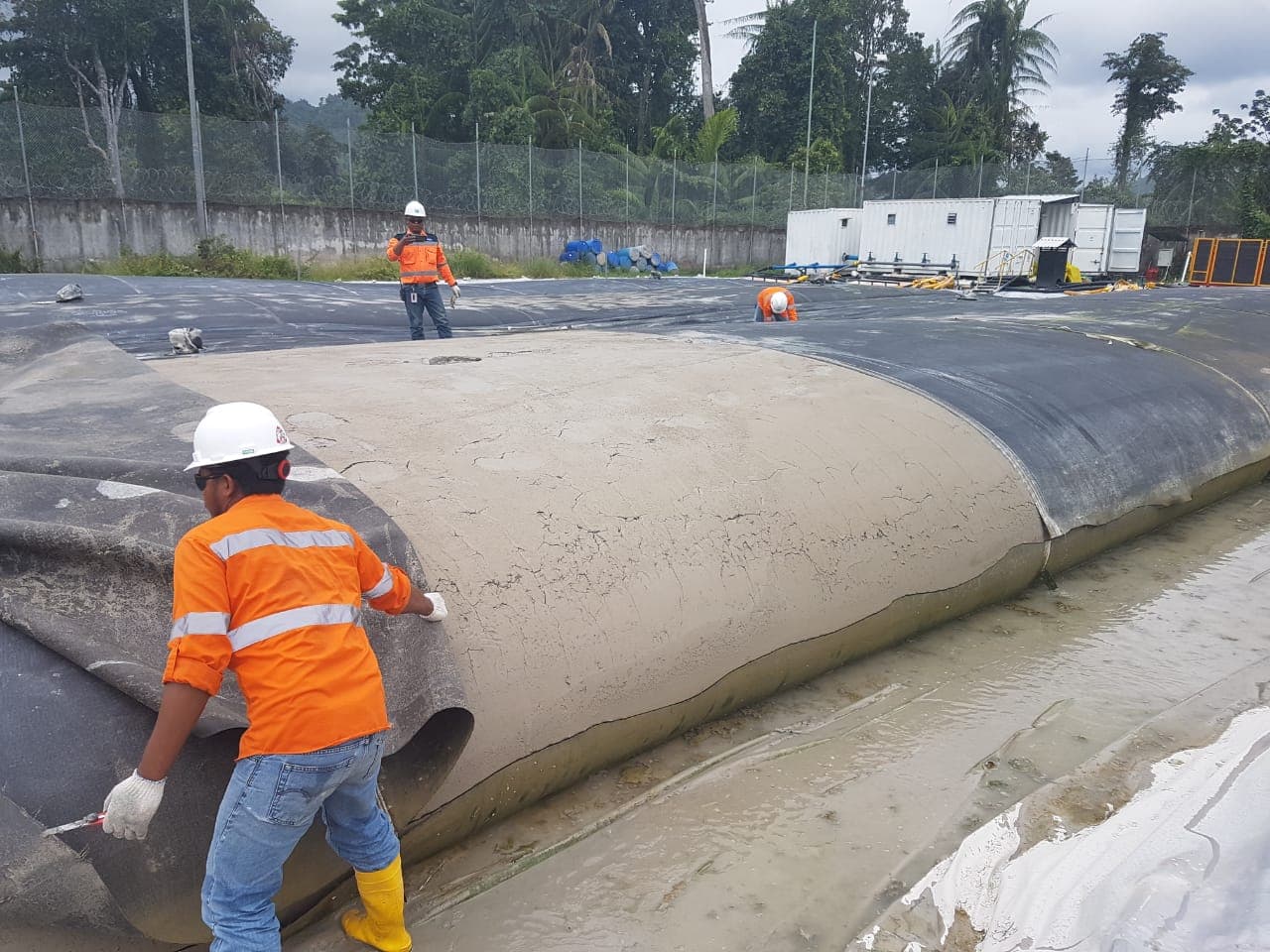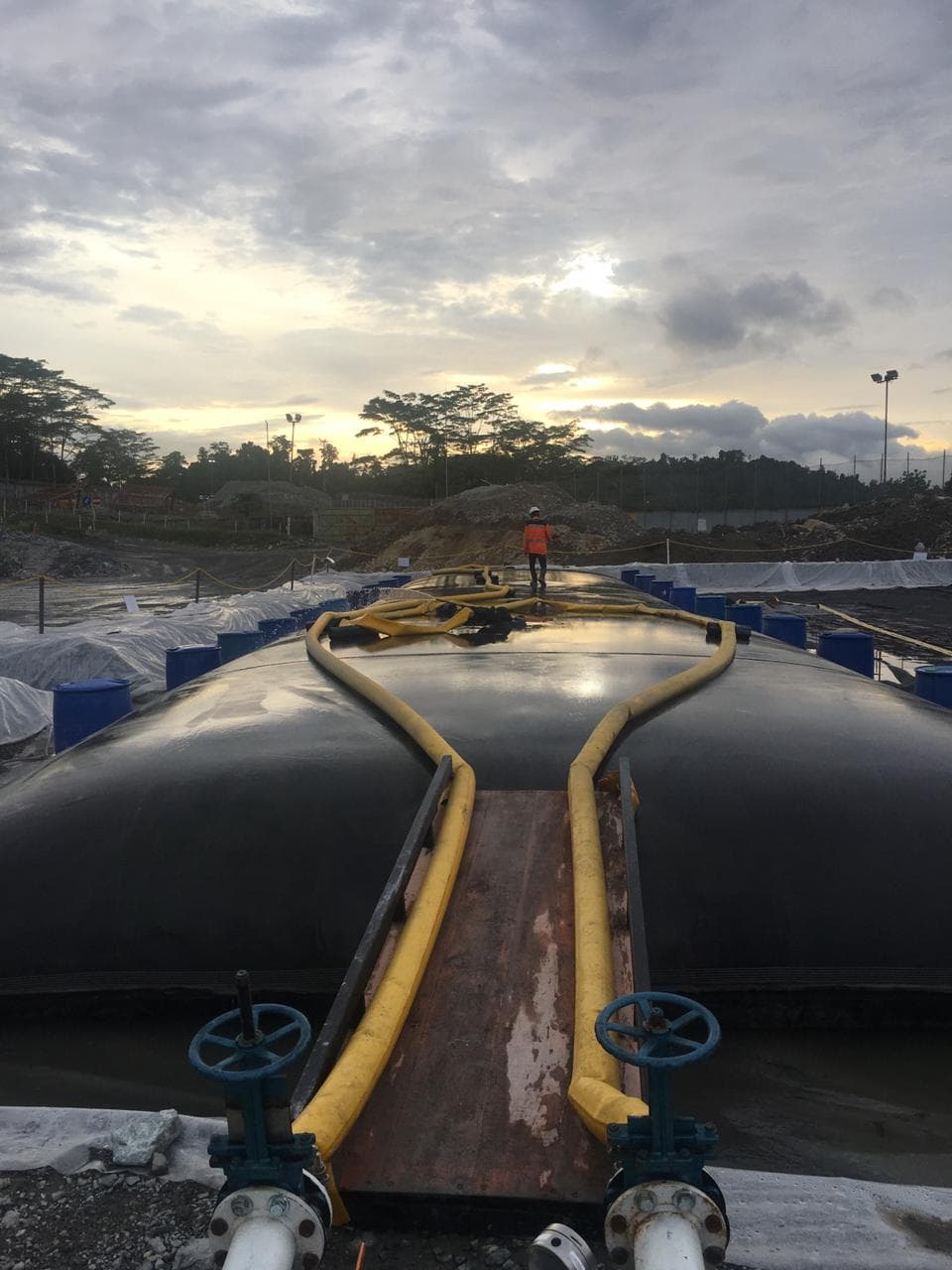Overview
A remote gold mine located on an Indonesian island required the dredging of heavily silted settling ponds. These ponds contained valuable gold deposits that needed to be recovered and reprocessed. The limited availability of free land space posed a challenge. To avoid the high costs and difficulties associated with constructing new ponds, an alternative approach was sought. This involved dewatering the mineral-rich slurry in the settlement ponds to enable the recovery of solids for reprocessing.
Challenge
After performing calculations using GEOTUBE® dewatering units to contain and dewater the mineral-rich slurry, it was determined that the value of the recovered minerals could partially offset the cost of desilting the ponds. This approach proved to be a more cost-effective and time-efficient solution compared to building new ponds.
In any dewatering project, it is essential to determine the final dryness of the solids. To accomplish this, two dewatering tests were developed
Rapid Dewatering Test (RDT): This test assesses how effectively a representative sample of slurry can be dewatered. It also determines the optimal type and percentage of flocculant required to aid the dewatering process. The test provides information on the mass of solids remaining after the liquid portion is discharged through the GEOTUBE fabric.
GEOTUBE Dewatering Test (GDT): This test involves the use of a small pillow bag to visualize the dewatering process, evaluate the clarity of the effluent, and predict the achievable percentage of solids. Typically, a representative slurry sample of 15 to 20 liters (4 to 5.3 gallons) is used for this test.
Solution
Once the characteristics of the slurry are defined, and the volume of slurry to be dewatered is determined, the appropriate sizes of GEOTUBE units are calculated.
Tests conducted on the slurry from this project indicated a weighted average solids mass concentration of the sludge ranging from 10% to 15%, and a dewatered solids concentration ranging from 55% to 65%. Achieving these concentrations required 4 to 6 cycles of filling and dewatering. It was determined that GEOTUBE units comprising GT500D fabric with a circumference of 13.7 m (45 ft) and a length of 30.6 m (100 ft) would be the most suitable option, considering the available space for constructing the dewatering pad and the total volume of slurry to be dewatered.
During the pumping process, the slurry was injected with polymer flocculant just before being discharged into the GEOTUBE units. The flocculant mixes into the slurry by passing through a simple pipe mixer. The pump rate was 80 m³ (105 yd³) per hour. The effluent discharged from the GEOTUBE units was collected in a sump and then discharged back into the adjacent ponds.
Result
This project demonstrates the effectiveness and versatility of GEOTUBE dewatering technology in recovering mineral-rich slurry pond residue for reprocessing. The high-volume reduction and high solids concentration enabled greater value to be derived from the recovery of minerals, which helped offset the cost of desilting the ponds. With GEOTUBE Dewatering, the need for constructing additional settlement ponds and purchasing additional land was eliminated.
